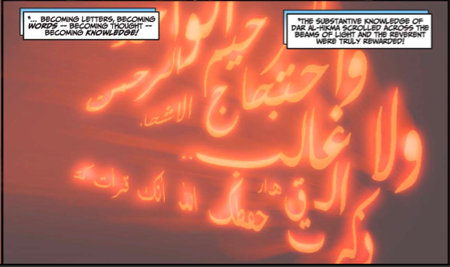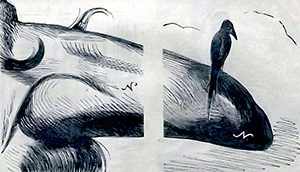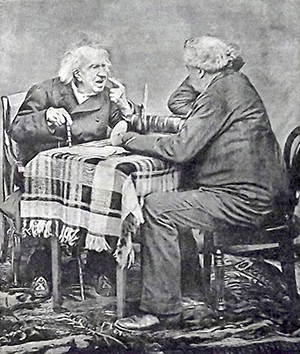[October 1, 2011
Dangerous Drawings: Cartoons in the Arabian Revolution
21.3.2011
The Power of Image – International Conference on Caricatures in Egypt
Caricatures as vehicles of political and social propaganda are the subject of an international conference organised in Egypt by Heidelberg University’s Cluster of Excellence “Asia and Europe in a Global Context”. It is organised by research project B1 “Satire”, supervised by Prof.D. Hans Harder in collaboration with the Fayoum Art Centre, Egypt. The workshop is coordinated by Eliane Ettmüller , who is currently reporting from Egypt in her blog “Egyptian Letters”. Scholars from eight countries will be discussing caricatures from different cultures, most of them from the era of imperialism and colonialism. Reference will however also be made to recent examples of caricature, notably in connection with the revolutionary events taking place in Tunisia and Egypt in the past weeks.
(Source: egyptianletters.blogspot.com)
(Source: egyptianletters.blogspot.com)
“Caricatures are excellent at expressing criticism and can even cause uprisings in a society,” says Eliane Ettmüller. “The point is that they not only have aesthetic value but are also vehicles for moral messages and political propaganda.” How caricatures from different cultures lampoon power constellations and social hierarchies is one of the central issues to be addressed at the conference. The lectures will examine caricatures from Japan, India and Iran as well as satirical cartoons published in Arab, British and French daily newspapers as comments on the recent revolutionary events occurring in Tunisia and Egypt. Another talk homes in on “The 99” by Kuwaiti artist Naif Al-Mutawa, a superhero comic very popular with Muslim youngsters at present. It combines traditional Islamic tenets with values upheld in the West.
The workshop was held at the only Caricature Museum in the Arab Middle East which is located in Fayoum, Egypt, from March 24-26, 2011. A film about Caricatures and Satire in Egypt was shot during this workshop.
(Source: www.the99.org)
—————————————————————–
26.8.2011
Cartoonist Ali Ferzat – victim of Assad´s regime of terror
In the early morning hours of Aug. 24, masked members of President Bashar al-Assad’s security forces pulled Syrian cartoonist Ali Ferzat out of his car near Damascus’s Umayyad Mosque. He was then beaten, mainly on his hands, and dumped on the road leading to the airport. Ferzat drew cartoons about the uprising and posted the illustrations on his private website, providing comic relief to many Syrians who were unable to follow his work in local newspapers because of a ban on his drawings. His illustrations grew bolder in recent months, with some of his cartoons directly criticizing Assad, even through caricatures of the president are forbidden in Syria.
Le Délit, Paris, 5 avril 2005
Ali Ferzat: The Hike
Damascus, 2011
————————————————-
18.9.2011
Zahra´s Paradise: Dissidence in Iran
After the huge success of the webversion, Zahra’s Paradise, the semi-documentary or real-time fictional graphic novel on the situation of political dissidents in Iran is finally published in English and German versions. It was created by two Iran authors in exile, which hide their identities under pen names to protect their families at home. Amir is an Iranian-American human rights activist, journalist and documentary filmmaker and Khalil a sculptor and cartoonist. “Set in the aftermath of Iran’s fraudulent elections of 2009, Zahra’s Paradise is the fictional story of the search for Mehdi, a young protestor who has disappeared in the Islamic Republic’s gulags. Mehdi has vanished in an extrajudicial twilight zone where habeas corpus is suspended. What stops his memory from being obliterated is not the law. It is the grit and guts of a mother who refuses to surrender her son to fate and the tenacity of a brother—a blogger—who fuses culture and technology to explore and explode absence: the void in which Mehdi has vanished.”










